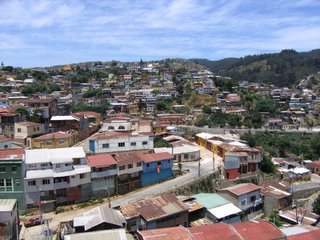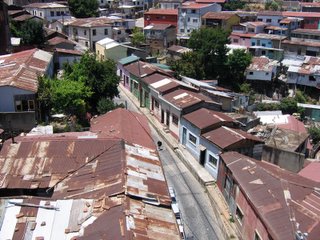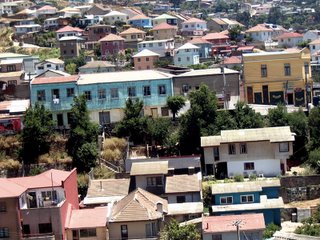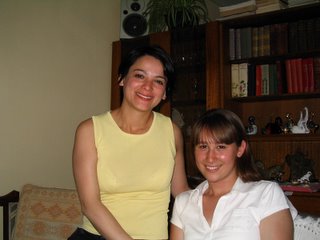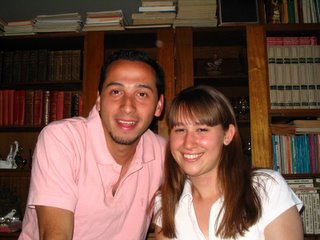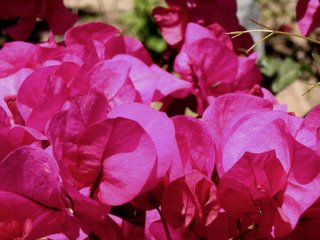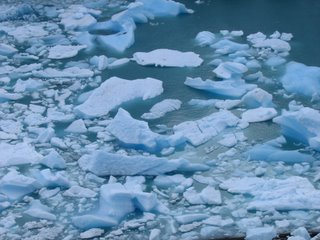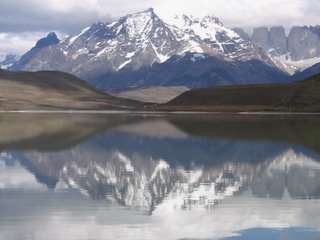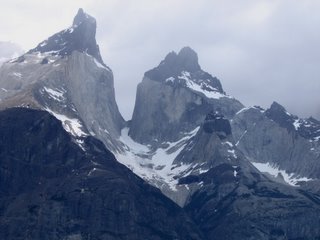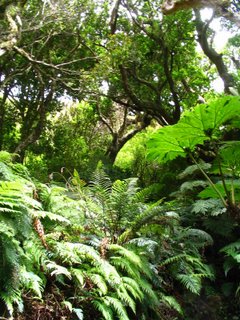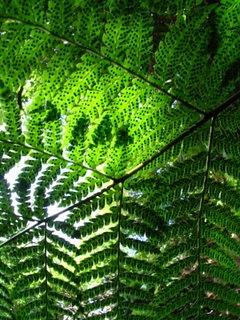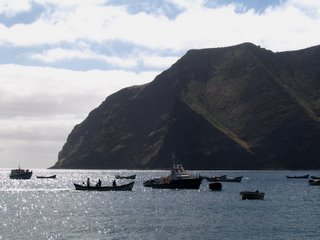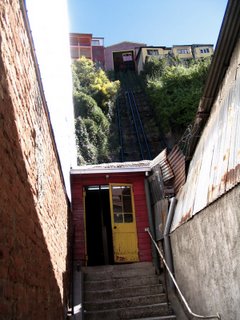
The landing strip on Isla Juan Fernández. Its on the only flat part of the island, and its so little that when you're landing you're afraid the plane isn't going to stop in time and you're going to go carreening off the other side of the island, missing it all together.
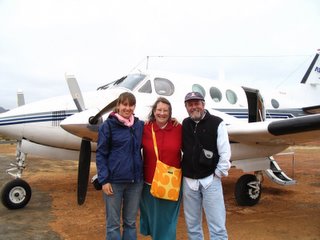
Happy that we made it alive, we pose next to the 5 person plane! The pilot, an elderly man in a polyester suit, is a local celebrity since his plane is the only quick way on or off the island, which is 700 km across the Pacific from Valparaíso.

After the flight, we had an hour and a half boat ride before getting to town. Walking from the airstrip, we wound down into this little volcanic bay, where our boat, the Blanca Luz, was waiting.

After having problems with the engine, the captain finally got the boat going. He was a little man with a funky leg who took his job very seriously. The rest of the crew, though, was always joking around and playing pranks on eachother.

By this point, we were getting really excited about our time on the island. The colors and the huge mountains were breathtaking. Unlike Easter Island, which is a biological wasteland, the Islas Juan Fernández have over 100 endemic species, and are named UNESCO World Biosphere Reserve for their plant diversity.
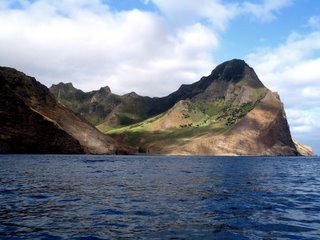
Here you can see Puerto Ingles. The trees are where they are digging for the buried pirate treasure which both American and Chilean archeological teams claim exists.

Our lancha comes into Bahía Cumberland, where we can see the only town, San Juan Bautista.

The town, San Juan Bautista, has a population of just 500. Everything, except for fish, has to be shipped in to them from Valparaíso. Now the supply boat comes every 2 weeks, but it used to come only once every 6 months. There are dirt roads, little colorfully painted houses (I can never understand why North Americans insist on painting their houses grey and white and beige when they could follow Latin America's wonderful example and paint them purple, and red, and orange!), gorgeous flower gardens, and lots of trails that if you follow them go up into the mountains. According to Julio, most of the people on the island work in lobster-fishing and many of them have never visited continental Chile. In the left corner of the photo you can see the "cabbage plant" which is endemic to the island, and which is one of things that people stranded there ate to survive.
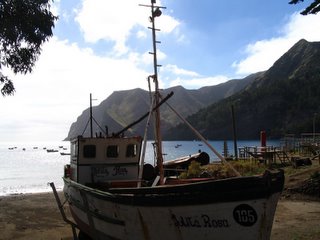
On the walk from the pier to the Refugio Nautico, we passed the aging Julita Rosa (my name hispanisized). Actually, everyone in our family has very hispanic names, if you pronounce them right: Patricia, Daniel, y Julia.

Our lodging, the Refugio Nautico. It was expensive (everything has to be shipped in from the mainland) but so comfortable and beautiful that it was totally worth it. Our room had a view of the harbor and you could hear the waves at night. The best part was the food...the owners had imported a Santiago-trained gourmet chef who cooked us three meals a day. Since being a vegetarian in Chile usually means eating white bread, avocado, and bananas three meals a day, the amazing food made a big difference. We had things like vegetarian 'ceviche,' risotto, asparagus and avocado mousse, quinoa salad, and traditional Chilean foods made vegetarian especially for us. Basically the whole time on the island we were either hiking in the moutains or eating amazing food...it was a rough life ; ) We became friends with the chef, Manuel and his helper Julio, and our long talks with them about Chilean politics and island life were just as enjoyable as the food.



